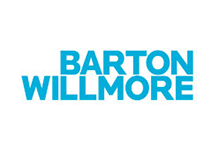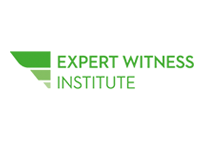Call us free on 0808 168 9540
Call us free on 0808 168 9540

Effective Japanese Knotweed treatment is essential to achieve long-term Japanese Knotweed removal and can be achieved using a variety of treatment techniques. Learn more about our approach and why you can rely on our expertise.








Applications of specialised herbicides are used over the duration of two to four growing seasons. This Japanese knotweed solution is only ever carried out by fully qualified and experienced sprayers; this is often the cheapest treatment option. If a quicker solution is needed there are other methods that Phlorum can provide. The herbicide treatment period can also be reduced by using a number of clever techniques to reduce the vigour of knotweed rhizomes.
Some unscrupulous contractors suggest that knotweed can be eradicated using herbicides within a single growing season. Various sources of guidance and advice from professional bodies and regulators, such as RICS and the Environment Agency, warn of these overblown claims. There is currently no product or commercially available chemical system that will, on its own, eradicate mature knotweed growth in a single season.
On large development sites Japanese knotweed infested areas of land can be moved to specified treatment bunds or stockpile areas. This frees up areas to be developed and relocates the Japanese knotweed to more convenient areas of the site where it can be treated with an appropriate herbicide programme.
This solution removes the most vigorous and hard to treat areas of knotweed plants. The remaining material can then be dealt with using a variety of soil sorting and herbicide application techniques.
This method encapsulates some or all of the Japanese knotweed growth within or under a specialist root barrier membrane. This barrier is of very high puncture resistance and is robust enough to withstand cracks or tears from most spoil materials. This process can provide instant eradication of Japanese knotweed from many sites.
On-site burial is another instant Japanese knotweed eradication method. This involves the creation of a burial cell that holds the excavated knotweed waste. This technique is often best suited to areas where there are no deep groundworks or services planned – e.g., car parks or public open spaces.
Volumes of knotweed waste can be significantly reduced by separating rhizome (root) material from affected soil. This can be achieved using a variety of picking, screening and sorting operations using a range of different resources, including picking stations and various types of mechanical screens.
Different techniques are more effective depending on the volume of Japanese knotweed infested soils that are being treated. On larger sites the process can require an Environmental Permit, which Phlorum can obtain from the appropriate regulator (e.g., Environment Agency or SEPA).
Excavation of Japanese knotweed and removal of wastes to a landfill site is a frequent option where time and space don’t allow other treatment strategies. Previous Environment Agency guidelines stated that excavation of Japanese knotweed should be undertaken within a 7 metre zone around plants and to a depth of 3 metres.
However, by carefully managing the knotweed excavation process, Phlorum’s experts can reduce volumes of waste arisings to amounts significantly lower than the former Environment Agency guidance suggested (often resulting in volume savings by as much as 50-90%!).
Japanese knotweed falls under the classification of “controlled waste”. Therefore, it is essential that if it is to be removed from its site of origin, it should be disposed of at an appropriately licensed waste facility.
In order to save our clients’ money, Phlorum has had significant experience in obtaining landfill tax exemption for knotweed waste. However, in line with the UK Government’s push to reduce the amount of waste that is sent to landfill, the exemption scheme has recently been dropped. Notwithstanding this, there remain ways to reduce Japanese knotweed waste charges and Phlorum offers advice on how to make the most of these.
Of particular interest to many clients is the land remediation tax relief scheme, where significant sums can be saved when treating Japanese knotweed contaminated sites. Phlorum can also create packages that combine treatment options in order to save money depending on our clients’ needs.
If you think that you have an infestation of Japanese Knotweed on your residential or commercial property, our Japanese Knotweed specialists offer FREE Japanese Knotweed identification and bespoke Japanese Knotweed removal services. We offer a variety of pricing options following a Japanese knotweed survey, please see our Japanese Knotweed removal cost page for guidance.

Dr Paul Beckett is one of the UK’s leading experts in Japanese knotweed and is a member of the Expert Witness Institute. He regularly provides Japanese knotweed expert witness services. He helped produce the RICS knotweed guidance for surveyors and was integral in the formation of the Property Care Association (PCA) Invasive Weed Control Group (IWCG).










